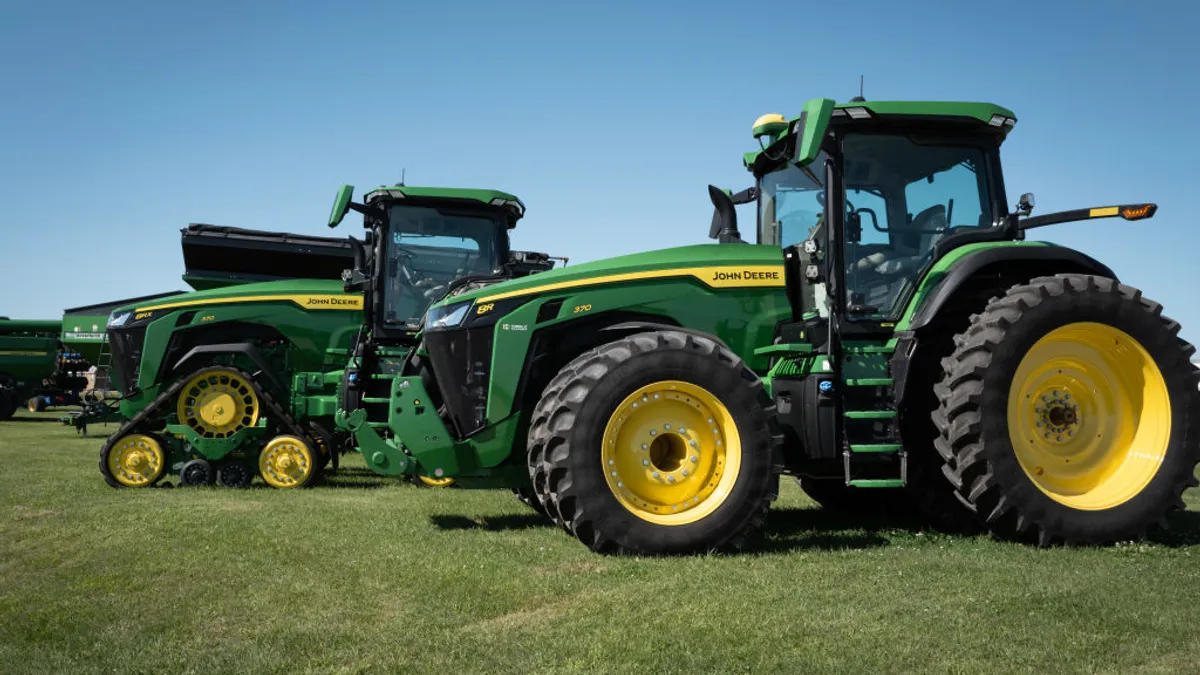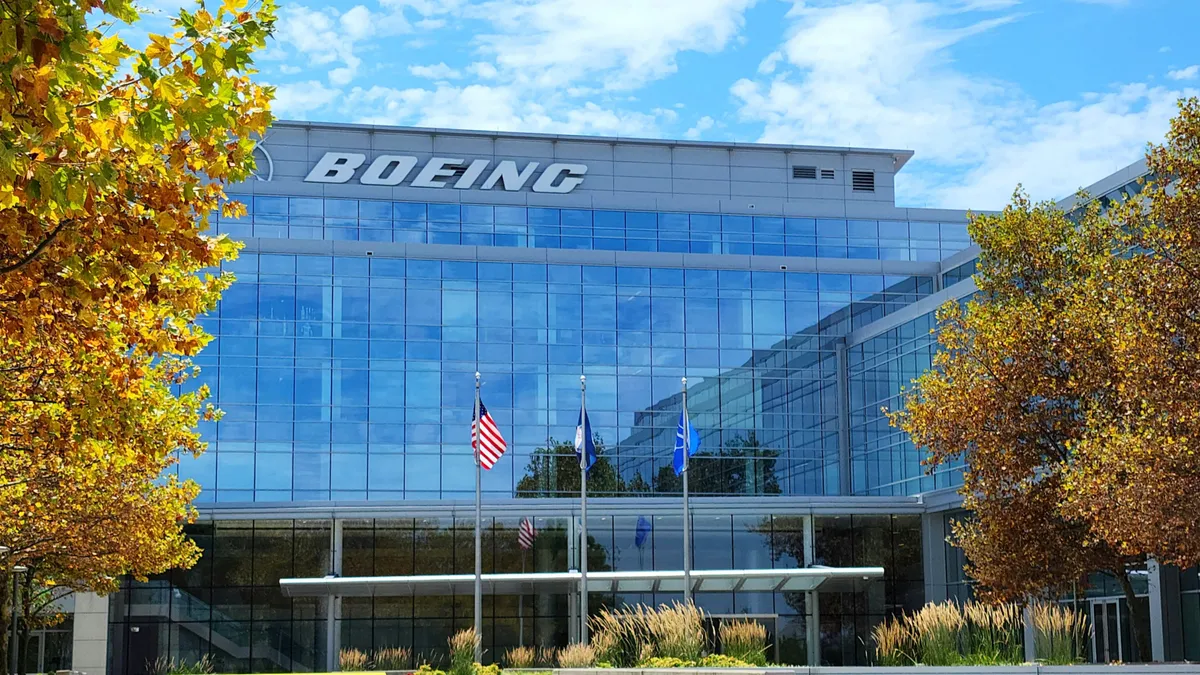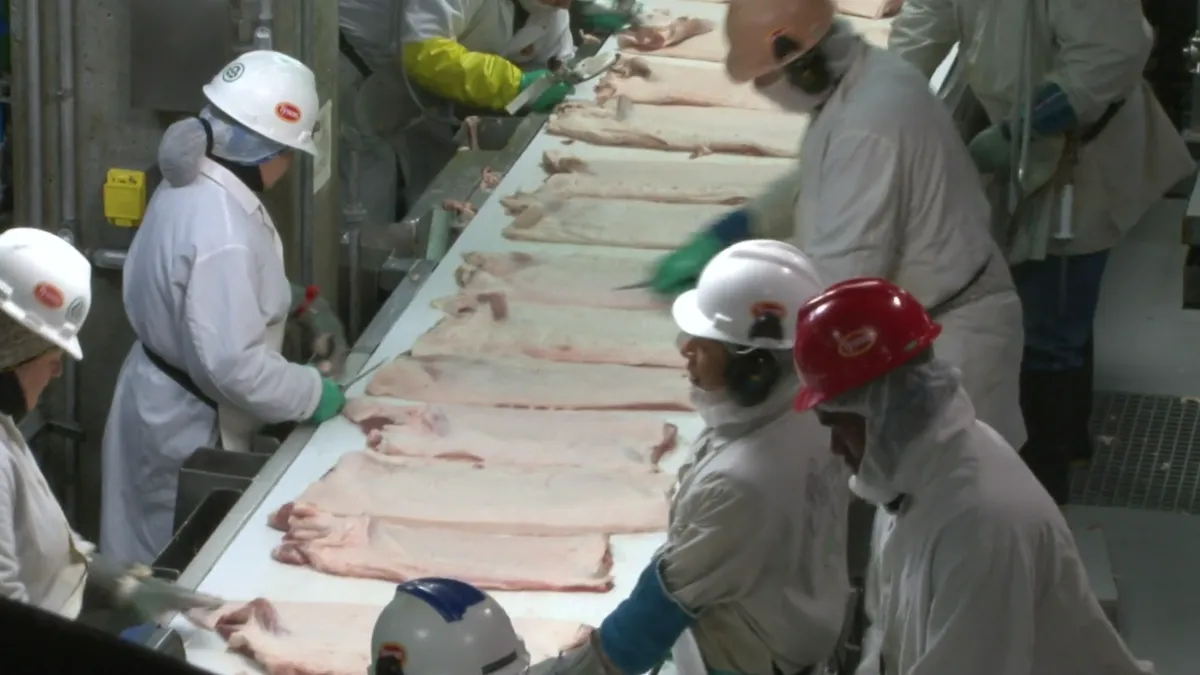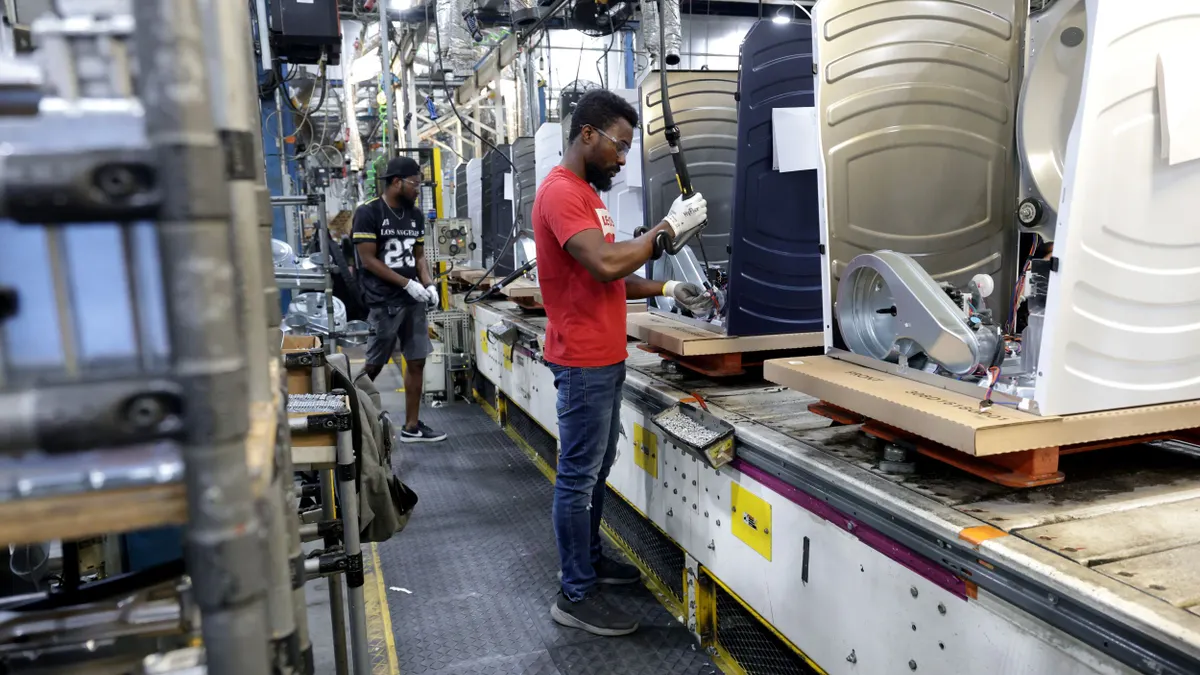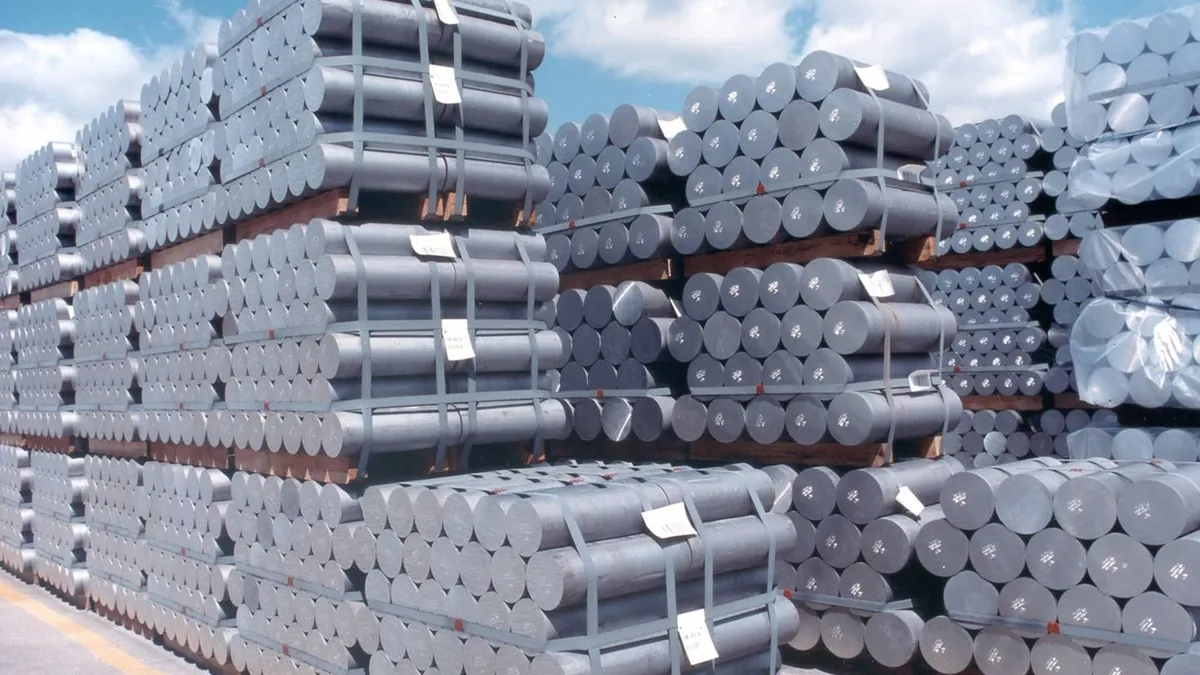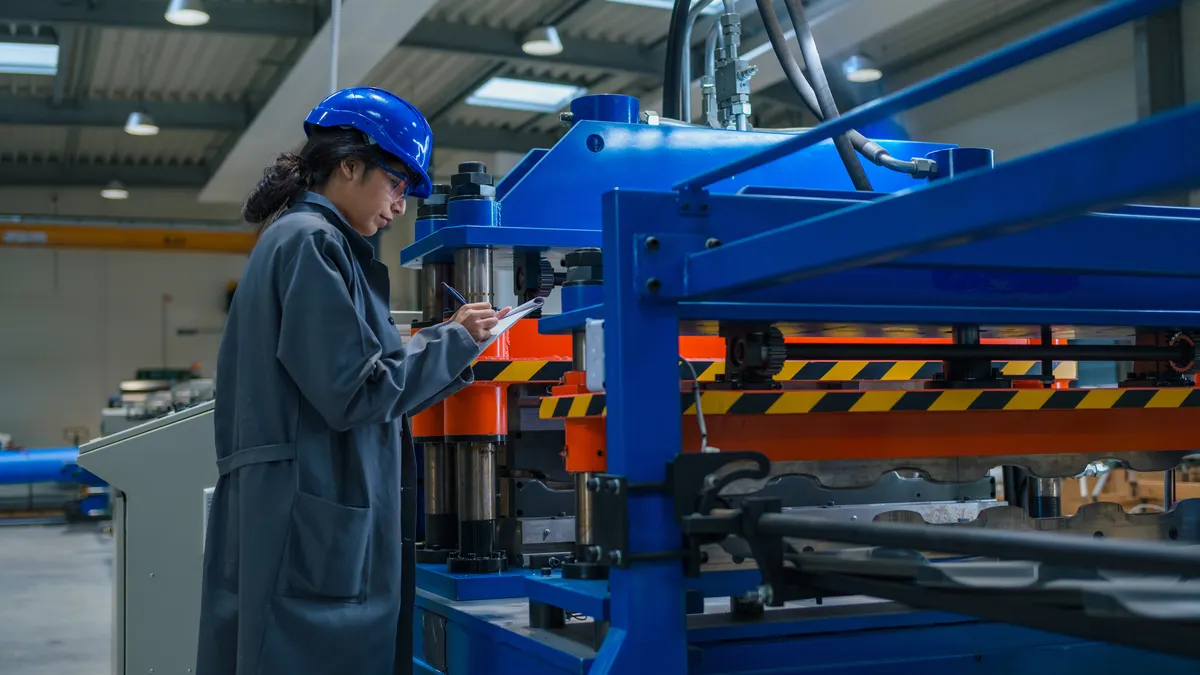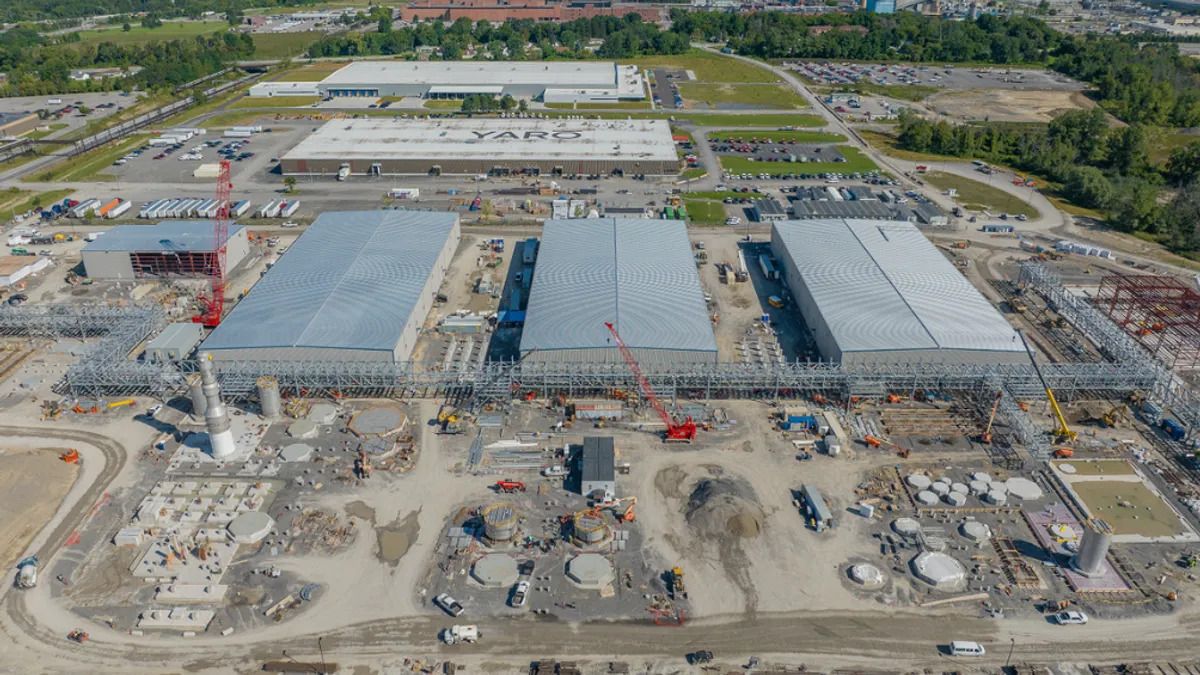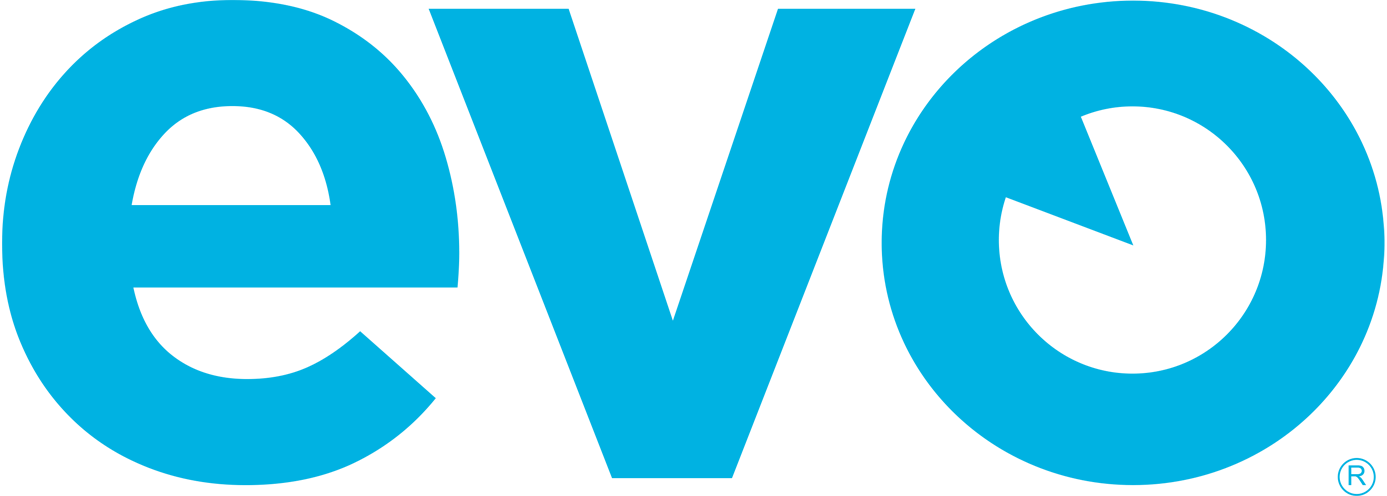Farm and construction equipment makers are keeping production low and destocking dealer inventories to align with demand.
In general, fewer people have been buying tractors, lawnmowers and other equipment during a period of high interest rates, input costs and tariff uncertainty. To offset the weaker sales and higher costs, companies have sought to rework their supplier networks and increase prices without sacrificing demand.
Here are some of the key takeaways from the latest earnings of Deere & Co., Agco Corp. and CNH Industrial.
Sales remain weak amid challenging agricultural backdrop
Weak sales driven by challenging agricultural conditions and tariff uncertainty continued to weigh on farm and construction equipment makers during the latest quarter.
Deere, the world’s largest tractor manufacturer, saw quarterly sales decline 16% to $4.3 billion in its production and precision ag business over the same period last year.
The business, which includes large and mid-size tractors, combines and other farm equipment, also reported operating profit of $580 million, down 50% from a year ago. The Moline, Illinois-based company attributed the declines to lower shipment volumes and unfavorable pricing for its products and services.
“Until there's more stability in the industry, [we] expect customers to continue to take a measured approach to capital investment,” Josh Beal, Deere’s director of investor relations, said on an Aug. 14 earnings call.
While Deere’s production and precision ag business struggled, other parts of the company performed better and lifted overall results. Global net sales and revenues, which includes tractors, as well as lawn mowers and construction equipment, fell 9% to $12 billion in the quarter compared to last year. Quarterly net income totaled $1.3 billion, a 26% decline from a year ago.
Agco and CNH also saw softer sales during the three months that ended June 30, citing challenging farm dynamics that affected demand across Europe and the United States.
Agco’s Q2 sales totaled $2.6 billion, down 19% year-over-year. However, net income improved to $325.3 million compared to a loss of $201 million last year. The Duluth, Georgia-based company recorded a $494.6 million loss during the period last year from its grain and protein business, which it later sold.
“Although government aid is helping, tight margins remain due to elevated input costs and reduced export demand,” Agco CEO Eric Hansotia said during a July 31 earnings call.
Meanwhile, CNH reported Q2 sales of $3.25 billion in its agriculture segment, down 17% YoY. As tractor demand stalled in most regions, notably North America, activity is picking up in South America, which has started to recover from the global farm down cycle.
Tractor makers are continuing to cut production and reduce dealer inventories
CNH, Agco and Deere are keeping production low in response to weaker retail demand. They have also continued to reduce their target dealer inventory levels ahead of an anticipated market recovery in 2026, executives said.
Overall production hours were down 12% YoY in agriculture and 15% in construction, CNH CEO Gerrit Marx said on an Aug. 1 earnings call. Meanwhile, Agco’s factory production hours were down 16% YoY on a global basis, according to investor slides.
“We are making good use of the down base and slow production pace to review our processes and take decisive actions to improve our manufacturing quality and consistency,” Marx said.
Earlier this year, CNH had elevated inventory of nearly $1 billion across dealers. The company has since worked to bring down those levels, shaving off $200 million from the total in Q2, Marx said. A lot of the destocking is happening across North America, where the company is seeing larger amounts of small and medium tractors, he added.
Agco’s production is down more than 50% in North America, Hansotia said on a separate call, where the company is “hyper-focused” on reducing dealer inventories. Supplies are hovering around a nine-month range, higher than the company’s six-month target.
Deere, on the other hand, is hitting a sweet spot with its output. Beal said factories are running well across the company, delivering on its production plans and hitting retail targets. After years of inventory reductions and underproduction, Beal said Deere is “done with underproduction this year” for large agriculture equipment.
“[We’re] happy with where new inventory levels are positioned across the globe,” Beal said.
Companies are taking actions to reduce the impacts of tariffs
Tariffs continue to weigh on equipment makers looking to limit the effects of fluctuating trade policies on customers.
Deere accrued tariff costs of $200 million in the recent quarter, bringing the total year-to-date trade expenses to roughly $300 million, Beal said. Looking ahead, the company is expecting an impact of nearly $600 million for the full fiscal year as rates increase on goods from Europe and India, he said. Tariffs on steel and aluminum imports have also recently doubled from 25% to 50%.
To mitigate these higher costs, Deere has worked to ensure its products are certified under the U.S.-Mexico-Canada Agreement. It has also made “no regret” sourcing decisions on certain components and incrementally increased prices to pass through some of the higher costs, Beal said.
“We'll work through the tariff costs that we have and both mitigate and make different decisions as we go forward,” CFO Joshua Jepsen said on the call. “But we feel good about the performance to date, and we're going to keep at it.”
Elsewhere, CNH is waiting on tariff impacts to fully materialize. CFO James Nickolas said the company is expecting a negative earnings hit in the back half of the year.
“We didn’t have tariffs affecting us in Q1 at all this year and very little in this past quarter,” Nickolas said.
CNH and Agco are also taking a similar approach to Deere in mitigating the tariffs, including sharing with suppliers and eliminating unnecessary costs.
“We will try to limit the effects on farmers by trying to minimize increases through supplier discussions and other supply chain adjustments,” Hansotia said. “We will implement price increases where appropriate and feasible.”



